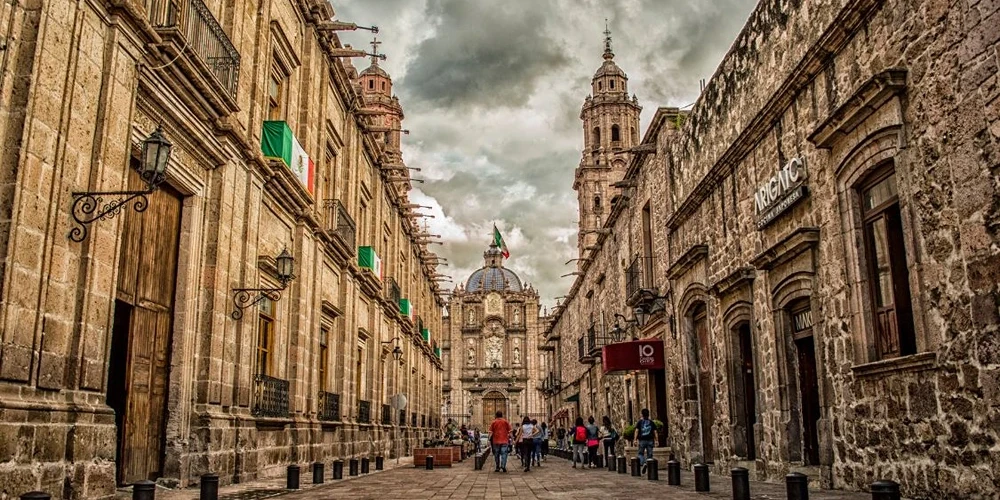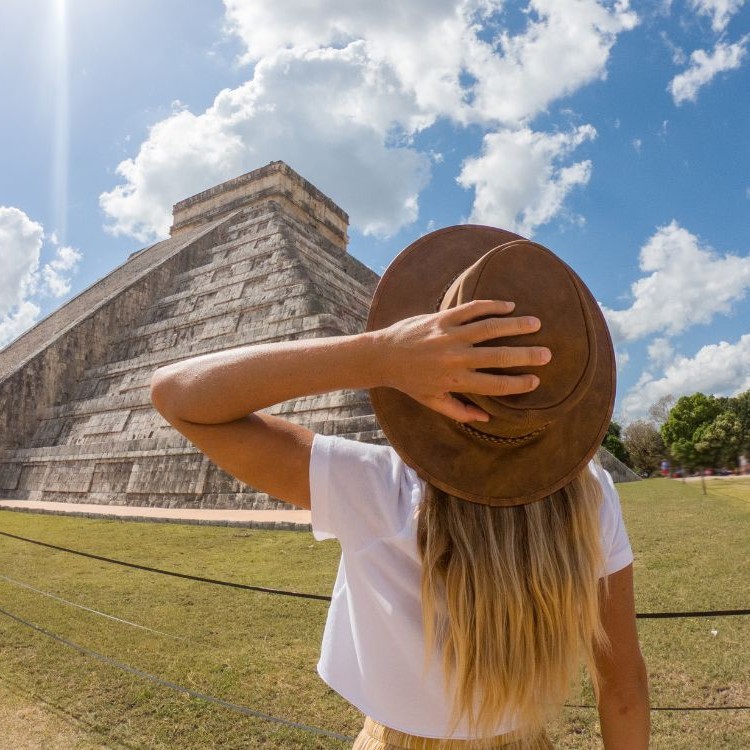Is Mexico City on your travel bucket list? If it’s not, it certainly should be. From its bustling markets to historical landmarks, Mexico City offers an array of remarkable experiences. Prepare to be captivated by the city’s rich cultural heritage, thriving art scene, and magnificent architecture. Whether you’re exploring the vibrant atmosphere of the Zócalo or wandering through lush Chapultepec Park, Mexico City has something to offer every traveler. Let’s delve into the top picks for must-visit sites, each promising a unique glimpse into the heart of this fascinating metropolis.
Table of Contents
ToggleExploring the Historic Center of Mexico City

The Zócalo, or Plaza de la Constitución, is a pivotal landmark in the historic center of Mexico City. As one of the largest public squares globally, it serves as a focal point for cultural heritage and national significance, surrounded by essential structures. The Zócalo’s vast open space has historically hosted numerous events and continues to be a hub of activity. The surrounding architecture showcases the blend of colonial and modern influences, reflecting Mexico City’s rich history.
A visit to the historic center is incomplete without exploring the Metropolitan Cathedral and the National Palace. The Metropolitan Cathedral is the oldest and largest cathedral in Latin America, renowned for its stunning Baroque and neoclassical architecture. Its grand interior and historical significance make it a must-see. Adjacent to the cathedral, the National Palace is another highlight, housing impressive murals by Diego Rivera and serving as the seat of the Mexican federal government.
To enhance your visit to the historic center, consider these tips:
- Arrive early to avoid crowds and enjoy a more relaxed experience.
- Wear comfortable shoes as the area is best explored on foot.
- Check event schedules for any special happenings at the Zócalo.
- Visit nearby cafes and restaurants to sample local cuisine.
- Bring a camera to capture the stunning architectural details and vibrant atmosphere.
By following these tips, you can fully appreciate the beauty and cultural depth of Mexico City’s historic center.
Discovering Chapultepec Park and Cultural Sites
Chapultepec Park, known as Bosque de Chapultepec, is a sprawling urban oasis in the heart of Mexico City, spanning over 2,000 acres. As one of the largest city parks in the Western Hemisphere, it offers a much-needed escape from the urban hustle, providing lush greenery, tranquil lakes, and scenic walkways. The park is not only a natural sanctuary but also a cornerstone of cultural and historical significance. Its central location makes it an accessible getaway for both locals and tourists. The park’s diverse ecosystems and recreational spots make it a popular destination for picnics, jogging, and family outings.
One of the park’s main attractions is the Chapultepec Castle, perched atop Chapultepec Hill. The castle provides panoramic views of the city and houses the National History Museum, where visitors can explore a rich collection of historical artifacts. Another must-visit site is the National Museum of Anthropology, located at the park’s entrance. Renowned for its extensive collection of pre-Columbian relics, including the iconic Aztec Sunstone, the museum offers deep insights into the ancient civilizations that once thrived in Mexico. These cultural attractions within Chapultepec Park make it a prime destination for those interested in Mexico’s rich heritage.
| Attraction | Description |
|---|---|
| Chapultepec Castle | Offers panoramic views and houses the National History Museum, showcasing Mexico’s past through various artifacts and exhibits. |
| National Museum of Anthropology | Renowned for its vast collection of ancient Mexican artifacts, including the Aztec Sunstone, providing insights into pre-Columbian civilizations. |
| Chapultepec Zoo | A family-friendly attraction featuring a variety of animal species and efforts in conservation and education. |
| Botanical Garden | Displays a wide array of native plant species, offering educational tours and a peaceful retreat within the bustling city. |
Unveiling the Art and Architecture of Mexico City
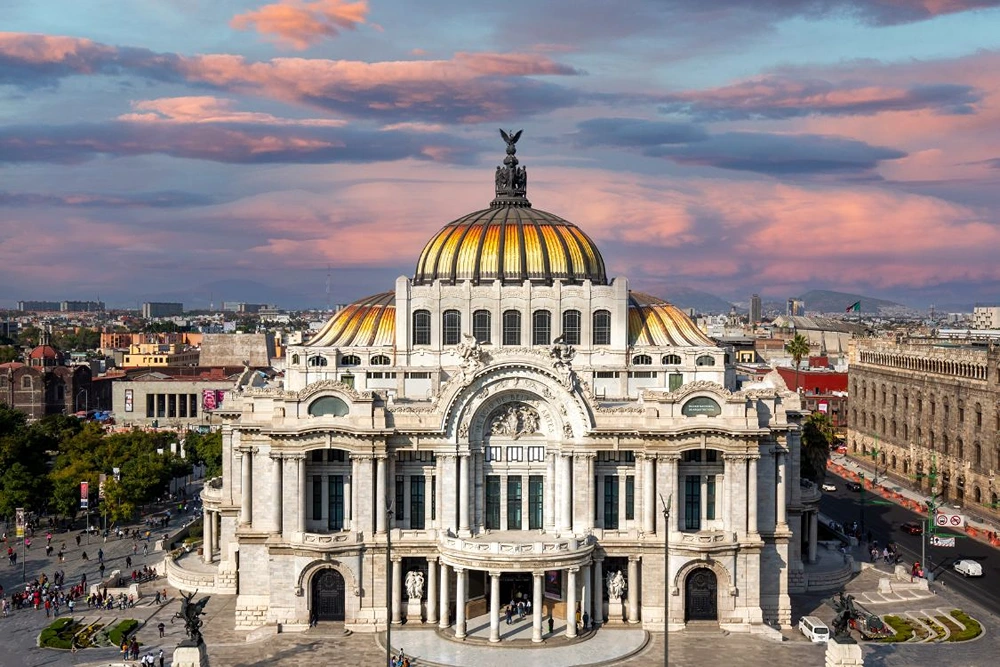
The Palacio de Bellas Artes stands as a monumental symbol of Mexico City’s rich cultural landscape. Renowned for its breathtaking architecture, this iconic building is adorned with murals by celebrated Mexican artists like Diego Rivera and Rufino Tamayo. The Palacio serves as a hub for the performing arts, hosting a variety of exhibitions, concerts, and performances that showcase both national and international talent. Visitors can marvel at its opulent Art Nouveau and Art Deco design, making it a must-visit destination for art and architecture enthusiasts alike.
Beyond the Palacio, Mexico City’s art scene flourishes with numerous museums and galleries. The Museo Soumaya is particularly notable for its striking modern architecture and an extensive collection of European and Mexican art, including works by Rodin and Dalí. This museum reflects the city’s embrace of contemporary art and design. Other key venues, such as the Museo Tamayo and the Museo de Arte Moderno, offer diverse exhibitions that highlight both historical and avant-garde pieces. These institutions contribute significantly to the vibrant and ever-evolving art scene in Mexico City, drawing visitors from around the globe.
- Kurimanzutto: Known for showcasing contemporary art by emerging and established artists, this gallery is a pioneer in Mexico City’s art scene.
- Galería OMR: Focuses on cutting-edge contemporary art, featuring works that challenge and inspire audiences.
- Labor Gallery: Specializes in innovative and experimental art, with a focus on social and political themes.
- Casa Lamm Cultural Center: Offers a blend of traditional and contemporary art, housed in a historic mansion with beautiful gardens.
Experiencing Mexico City’s Vibrant Neighborhoods
The Condesa neighborhood is celebrated for its lively atmosphere, offering a blend of art deco architecture, bustling cafes, and lush green spaces like Parque México and Parque España. This area is a hub for creatives and young professionals who enjoy its bohemian vibe. Visitors can relax in the parks, explore local boutiques, or sample international cuisines at the many trendy restaurants. The pedestrian-friendly streets make it easy to wander and discover charming art galleries and street art that contribute to Condesa’s unique charm.
Adjacent to Condesa, the Roma district shares a similar artistic spirit but with a slightly edgier feel. Known for its vibrant street art, Roma is a haven for foodies and culture enthusiasts. The district is home to a plethora of eateries ranging from traditional taquerías to chic rooftop bars with scenic views. Roma’s cultural landscape is enriched by its independent bookstores, vintage shops, and art galleries. The neighborhood’s architecture, a mix of restored colonial buildings and modern facades, adds to its eclectic appeal, making it a must-visit for those seeking an authentic urban experience.
Polanco stands out as an upscale district renowned for its luxury shopping and fine dining. Avenida Presidente Masaryk, often compared to New York’s Fifth Avenue, hosts high-end boutiques and international brands. Beyond shopping, Polanco offers cultural richness with attractions like the Museo Soumaya and the Museo Jumex, showcasing contemporary and classical art. The district’s culinary scene is top-notch, featuring some of Mexico City’s best restaurants. Polanco’s leafy avenues and elegant plazas offer a sophisticated retreat for those looking to indulge in the city’s more opulent side.
- Stroll through the lush Parque México in Condesa for a relaxing afternoon.
- Enjoy a meal at a rooftop bar in Roma with panoramic views of the city.
- Explore the upscale shops along Avenida Presidente Masaryk in Polanco.
- Visit the Frida Kahlo Museum in Coyoacán to learn about the iconic artist’s life.
- Browse the eclectic art galleries and vintage shops in the Roma district.
Taking Day Trips from Mexico City
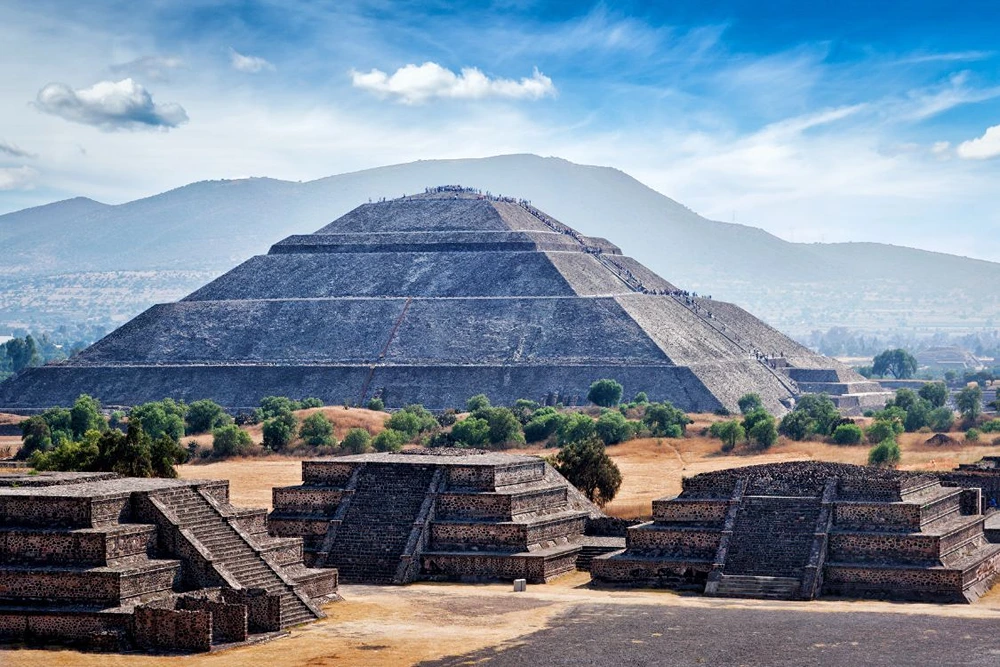
What makes Teotihuacan a must-visit for day trippers from Mexico City? The ancient city of Teotihuacan, with its monumental pyramids and well-preserved ruins, provides a fascinating glimpse into the past. Known as the “City of the Gods,” Teotihuacan was one of the largest cities in the ancient world and is now a UNESCO World Heritage site. Visitors can climb the Pyramid of the Sun, the third-largest pyramid in the world, and the Pyramid of the Moon for breathtaking views of the surrounding landscape. The Avenue of the Dead, a central thoroughfare flanked by smaller pyramids and temples, offers insight into the city’s ceremonial and residential areas. This day trip is perfect for history enthusiasts and those seeking to experience the architectural grandeur of an ancient civilization.
How do the Xochimilco canals differ from other cultural experiences in Mexico City? The Xochimilco canals provide a unique and vibrant cultural experience, distinct from the urban attractions of Mexico City. This network of ancient Aztec canals is best explored on a traditional trajinera, a colorful gondola-like boat. During a leisurely ride, visitors can enjoy the lively atmosphere, often accompanied by mariachi bands serenading from neighboring boats. The canals are lined with floating gardens, or chinampas, and offer opportunities to sample local foods from vendors selling fresh produce and traditional snacks. Xochimilco’s festive ambiance makes it a popular choice for those looking to immerse themselves in local culture and traditions.
- Teotihuacan: Explore the ancient pyramids and ruins of one of the most significant pre-Columbian cities.
- Xochimilco Canals: Enjoy a vibrant boat ride through colorful canals, accompanied by music and traditional food.
- Puebla: Discover colonial architecture, vibrant markets, and the culinary delights of this charming city.
Savoring the Flavors of Mexico City’s Food Scene
What makes Mexico City’s food scene stand out? The city’s culinary landscape is a rich tapestry of vibrant flavors and diverse dining experiences, ranging from bustling street food stalls to high-end gourmet establishments. Notable restaurants such as Contramar and Pujol have gained international acclaim for their innovative takes on traditional Mexican cuisine, offering patrons a sophisticated dining experience. For a more casual yet equally authentic taste, street food tours are a fantastic way to explore the city’s culinary diversity. These tours guide visitors through traditional markets and local taco spots, providing a hands-on encounter with Mexico’s culinary traditions. Whether indulging in a gourmet meal or savoring street tacos, Mexico City’s food scene caters to every palate.
Where can one find the most authentic tacos in Mexico City? El Turix and El Huequito are renowned for serving some of the best authentic tacos in the city. El Turix, famous for its cochinita pibil tacos, offers a taste of the Yucatan Peninsula’s flavorful cuisine. Meanwhile, El Huequito specializes in tacos al pastor, a must-try for anyone visiting Mexico City. These establishments exemplify the city’s dedication to preserving and celebrating traditional Mexican flavors. In addition to these spots, a food tour can introduce visitors to a variety of other local favorites, ensuring a comprehensive exploration of the city’s culinary offerings.
- Tacos al Pastor: Found at El Huequito, these tacos feature marinated pork served with pineapple on a corn tortilla.
- Cochinita Pibil: A Yucatan specialty, these tacos are slow-cooked and seasoned with achiote, available at El Turix.
- Chiles en Nogada: A seasonal dish made with stuffed poblano peppers topped with creamy walnut sauce, often found in traditional restaurants.
- Tamales: A staple of Mexican cuisine, these corn dough parcels are filled with meats or sweets and wrapped in corn husks, sold at many street vendors.
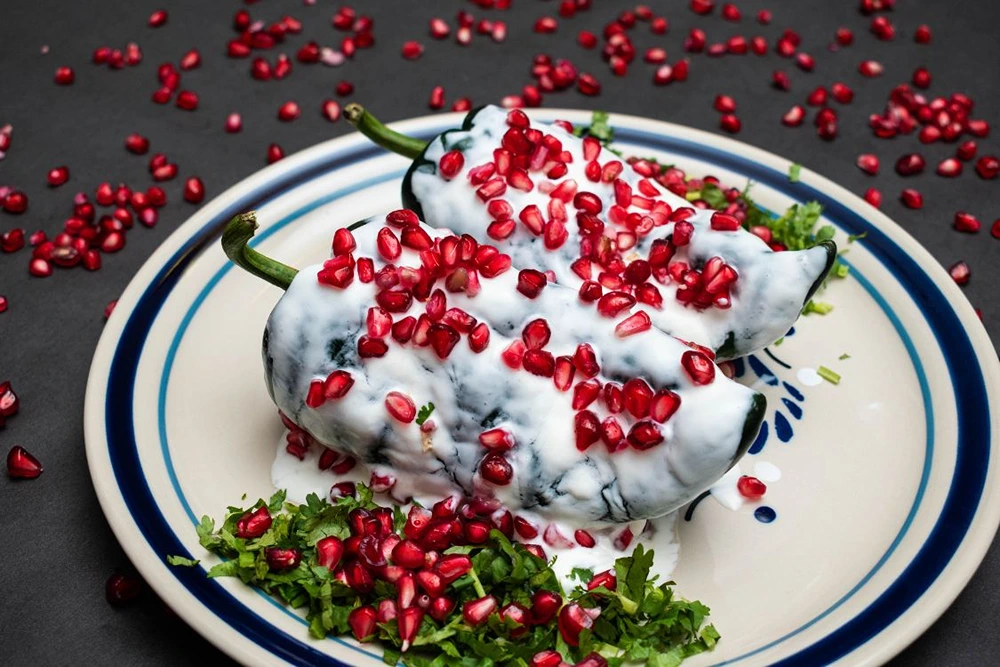
Final Words
Roaming through Mexico City reveals a city rich in history, culture, and flavors.
The Zócalo’s grand architecture sets the stage, while Chapultepec Park offers stunning views and museums for cultural immersion.
Art and architecture flourish at the Palacio de Bellas Artes and Museo Soumaya.
Diverse neighborhoods like Condesa and Polanco invite exploration with local dining and vibrant street life.
Day trips to Teotihuacan and Xochimilco offer distinct historical and cultural insights.
The Mexico City food scene boasts authentic tacos and unforgettable culinary experiences.
Each exploration uncovers yet another facet of the best places to visit in Mexico City, promising unforgettable memories.
FAQ
Q: What is the number one attraction in Mexico City?
A: The Zócalo, also known as Plaza de la Constitución, is considered the number one attraction in Mexico City. It is surrounded by significant historic buildings and hosts various cultural events.
Q: What is the nicest part of Mexico City?
A: Polanco is often regarded as the nicest part of Mexico City, known for its upscale shopping, dining, and cultural attractions. It offers a luxurious experience with beautiful streets and vibrant nightlife.
Q: What is the safest part of Mexico City to visit?
A: The Roma and Condesa neighborhoods are considered some of the safest areas to visit in Mexico City. Both offer a lively atmosphere with cafes, parks, and cultural activities, attracting many tourists.
Q: Is Mexico City worth visiting?
A: Mexico City is worth visiting for its rich cultural heritage, vibrant neighborhoods, and diverse culinary scene. It offers a blend of historic sites, art, and modern attractions, making it a unique destination.
Q: What are unique places to visit in Mexico City?
A: Unique places in Mexico City include the Frida Kahlo Museum in Coyoacán, Xochimilco’s colorful canals, Cerro del Tepeyac in La Villa de Guadalupe, and the surreal architecture of Casa Luis Barragán.
Q: What should one do in Mexico City for a week?
A: A week in Mexico City allows time to explore cultural landmarks like the Zócalo, Chapultepec Park, and the National Museum of Anthropology. Visitors can also experience vibrant neighborhoods and savor local cuisine.
Q: Where are the best hotels located in Mexico City?
A: The best hotels in Mexico City are often found in Polanco, downtown (Centro Histórico), and the trendy Condesa and Roma neighborhoods, offering a range of luxury, boutique, and budget-friendly options.
Q: What are the top restaurants in Mexico City?
A: Renowned restaurants in Mexico City include Pujol for fine dining, Contramar for seafood, and El Turix for authentic tacos. Each offers a unique taste of Mexican culinary artistry.
Q: What can young adults do in Mexico City?
A: For young adults, Mexico City offers lively nightclubs, trendy bars, art galleries, and cultural festivals. Exploring street art in Roma and vibrant markets in La Merced enhances the experience.
Q: What activities are available in Mexico City at night?
A: Nighttime in Mexico City offers activities such as enjoying a walking tour in Condesa, experiencing live music at Plaza Garibaldi, and watching performances at the iconic Palacio de Bellas Artes.
Hazel Wall is a passionate traveler, writer, and explorer dedicated to sharing her experiences and insights with fellow adventurers. With a background in journalism and a deep love for discovering new cultures, Hazel has journeyed across continents, immersing herself in diverse landscapes and traditions.


